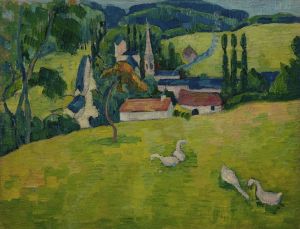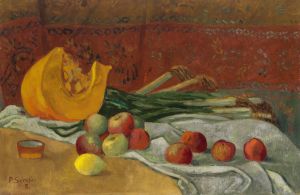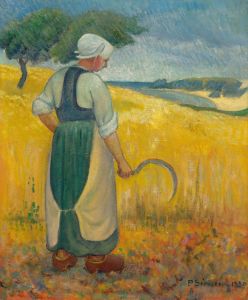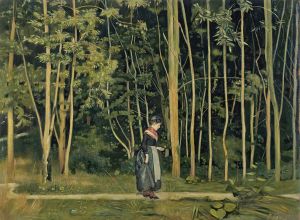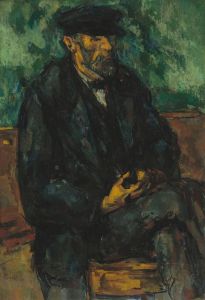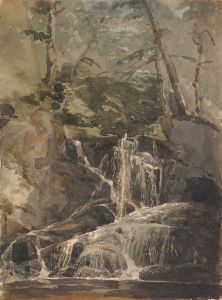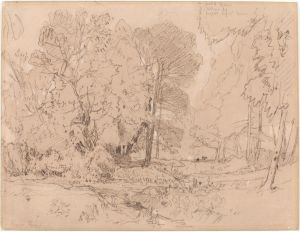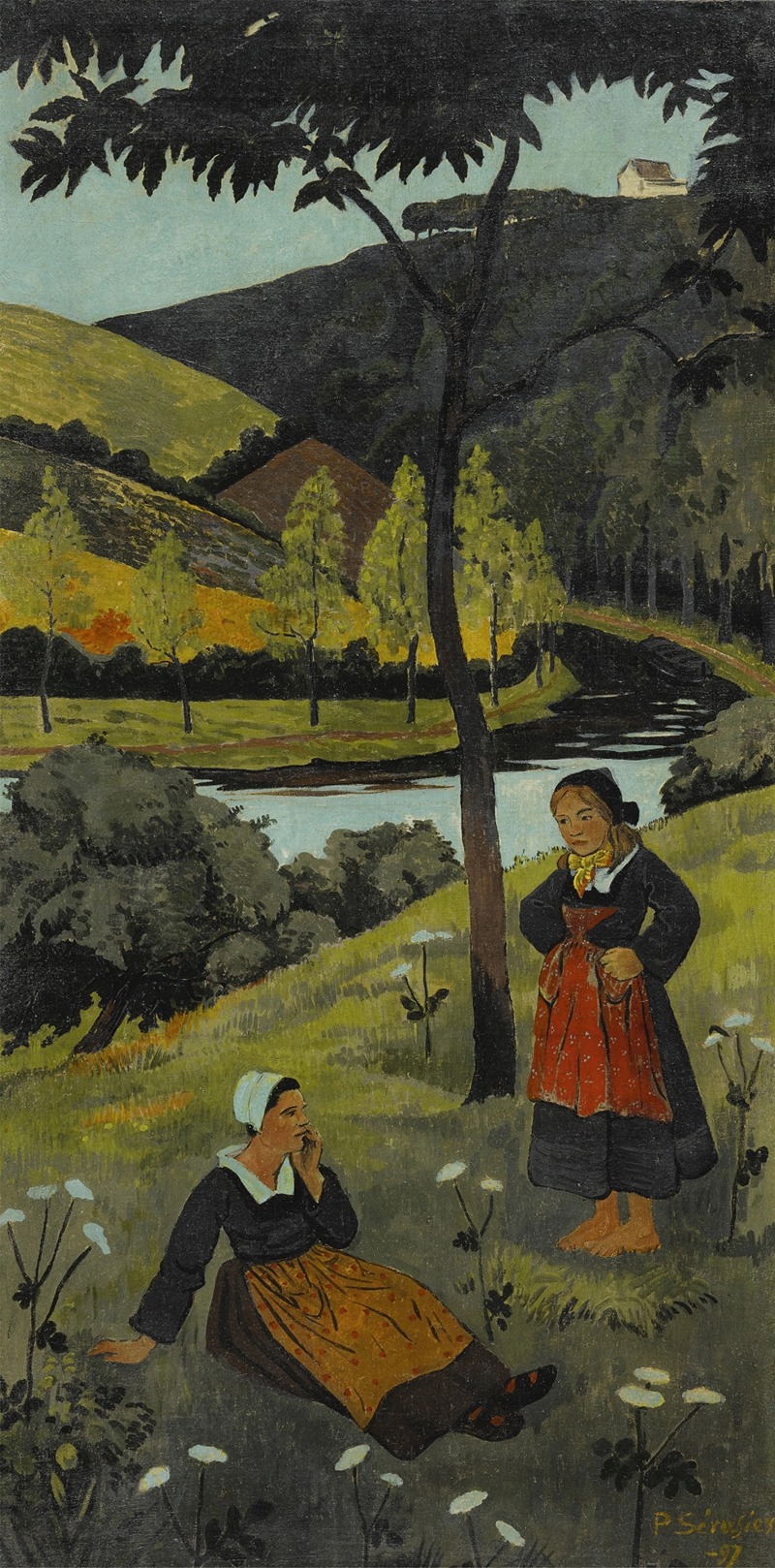
Deux bretonnes au bord de l’Aulne
A hand-painted replica of Paul Sérusier’s masterpiece Deux bretonnes au bord de l’Aulne, meticulously crafted by professional artists to capture the true essence of the original. Each piece is created with museum-quality canvas and rare mineral pigments, carefully painted by experienced artists with delicate brushstrokes and rich, layered colors to perfectly recreate the texture of the original artwork. Unlike machine-printed reproductions, this hand-painted version brings the painting to life, infused with the artist’s emotions and skill in every stroke. Whether for personal collection or home decoration, it instantly elevates the artistic atmosphere of any space.
Paul Sérusier's painting "Deux bretonnes au bord de l’Aulne" is a notable work from the late 19th century, reflecting the artist's involvement with the Pont-Aven School and his exploration of Symbolism and Synthetism. Sérusier, a French painter born in 1864, was a key figure in the post-Impressionist movement and played a significant role in the development of modern art in France.
The painting, whose title translates to "Two Breton Women by the Aulne," depicts two women in traditional Breton attire sitting by the Aulne River, a location in Brittany, France. This region was a popular destination for artists at the time, known for its picturesque landscapes and unique cultural heritage. The Pont-Aven School, a group of artists who gathered in Brittany, was heavily influenced by the area's distinct character, and Sérusier was among its most prominent members.
Sérusier's approach in this painting is characterized by the use of bold colors and simplified forms, a hallmark of the Synthetist style. Synthetism, which Sérusier helped pioneer alongside artists like Paul Gauguin, emphasized the synthesis of form and color to convey emotional and symbolic meaning rather than focusing on realistic representation. This method was a departure from the Impressionist focus on capturing light and atmosphere, instead aiming to express deeper spiritual and emotional truths.
In "Deux bretonnes au bord de l’Aulne," Sérusier employs flat areas of color and strong outlines to create a sense of harmony and balance. The composition is carefully structured, with the figures and landscape elements arranged to guide the viewer's eye through the scene. The use of vibrant colors and the stylized depiction of the figures reflect Sérusier's interest in the symbolic potential of color and form.
The painting also reflects Sérusier's fascination with Breton culture and its traditions. The women's traditional costumes and the serene rural setting evoke a sense of timelessness and connection to the land. This interest in regional culture was a common theme among artists of the Pont-Aven School, who sought to capture the essence of Brittany's unique identity.
Sérusier's work, including "Deux bretonnes au bord de l’Aulne," had a significant impact on the development of modern art. His exploration of color and form influenced later movements such as Fauvism and Cubism, and his teachings and writings on art theory contributed to the intellectual foundation of these movements. Sérusier's emphasis on the expressive potential of color and the importance of personal vision in art continues to resonate with artists and art historians today.
Overall, "Deux bretonnes au bord de l’Aulne" exemplifies Paul Sérusier's innovative approach to painting and his contribution to the evolution of modern art. Through its bold use of color and form, the painting captures the spirit of the Pont-Aven School and the broader Symbolist movement, offering a glimpse into the artistic experimentation and cultural exploration that defined this period in art history.





